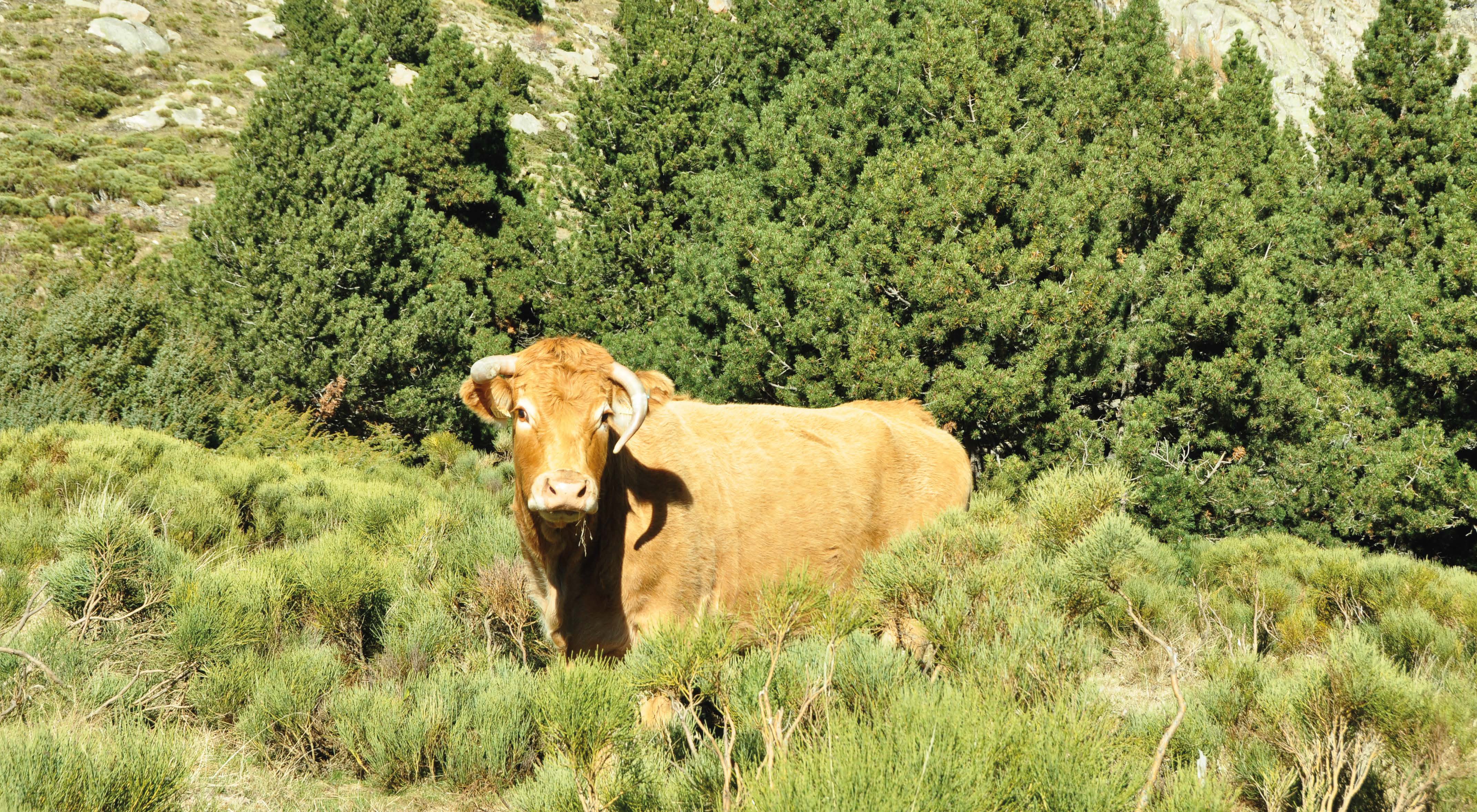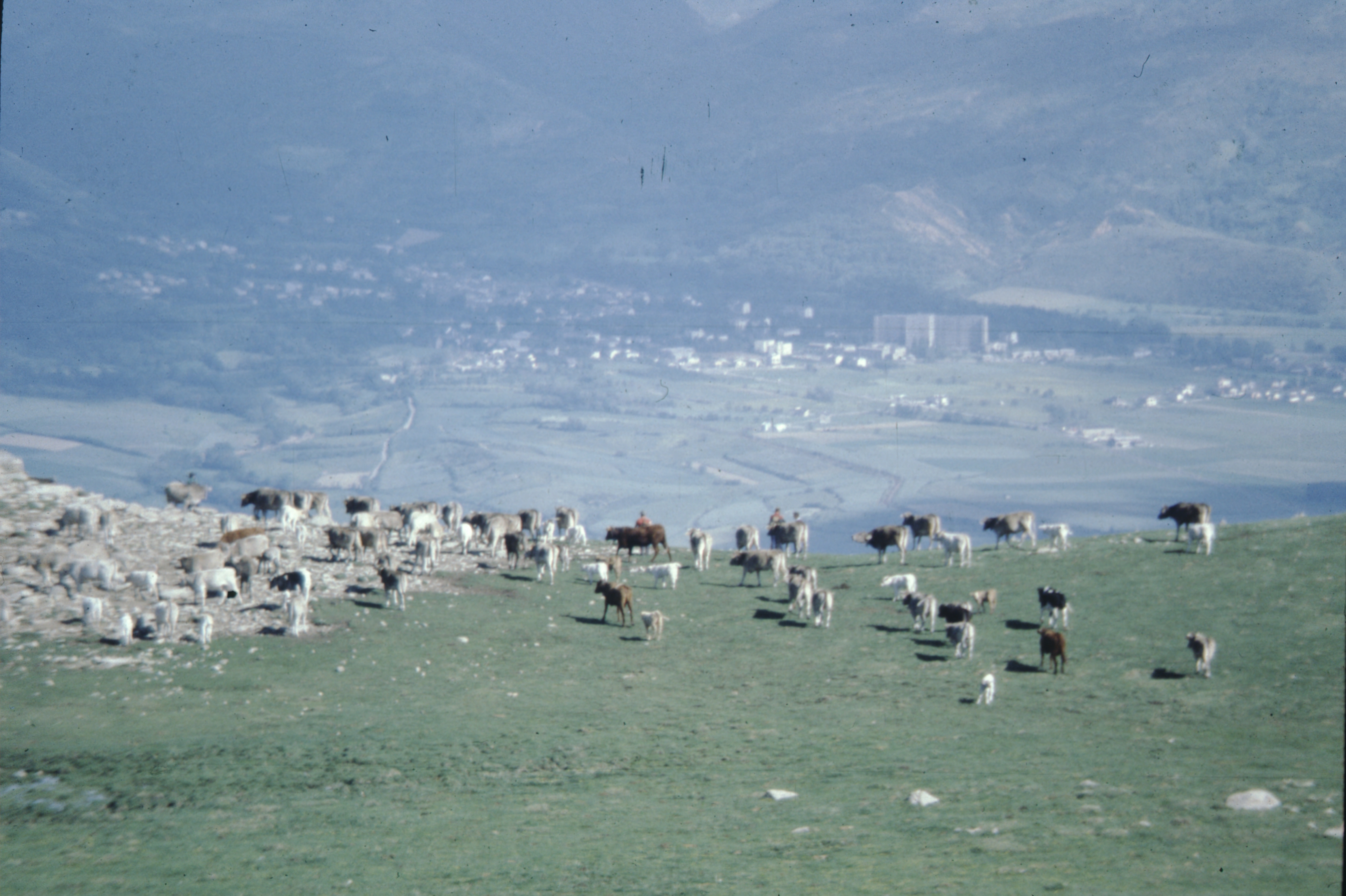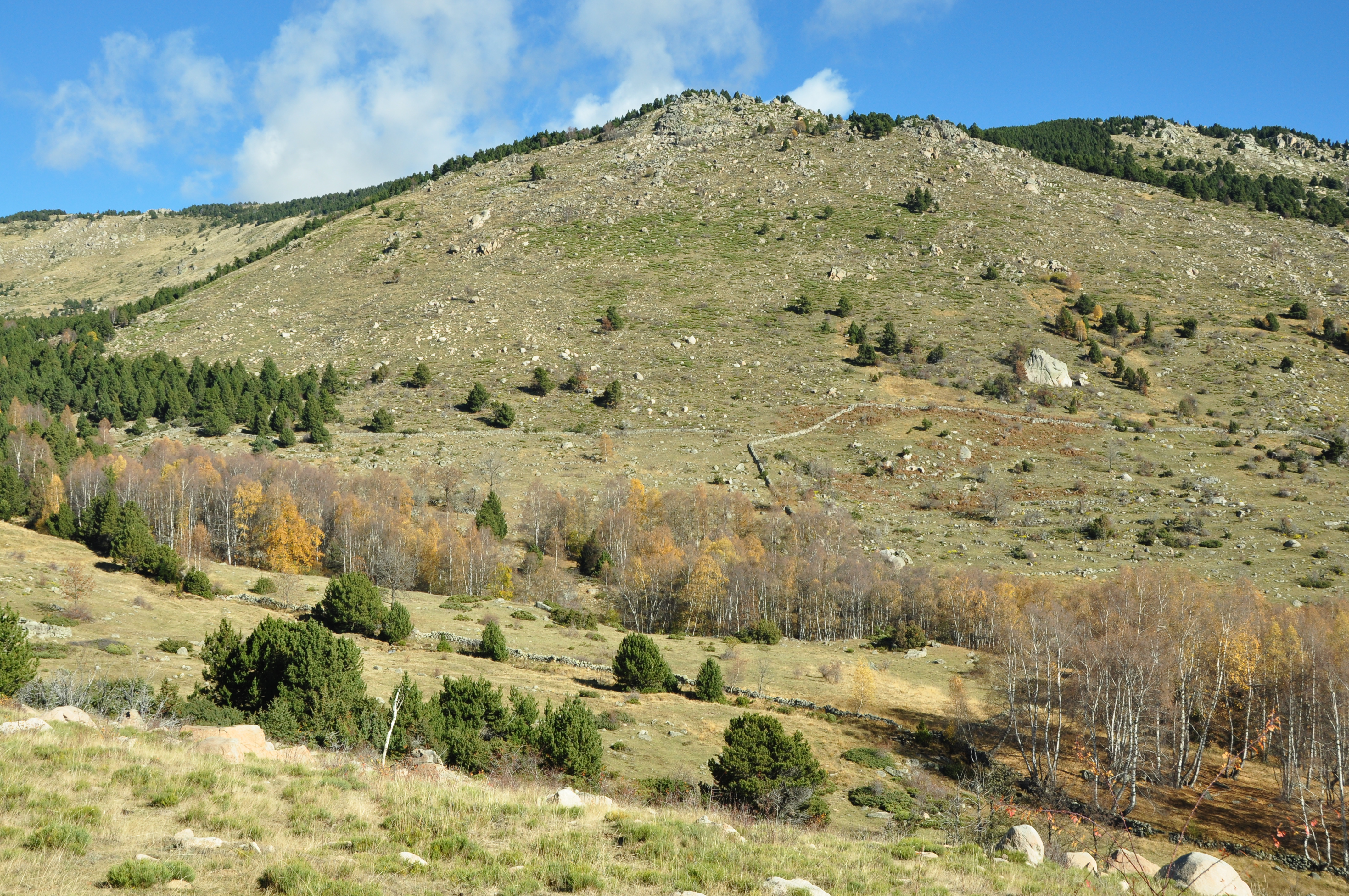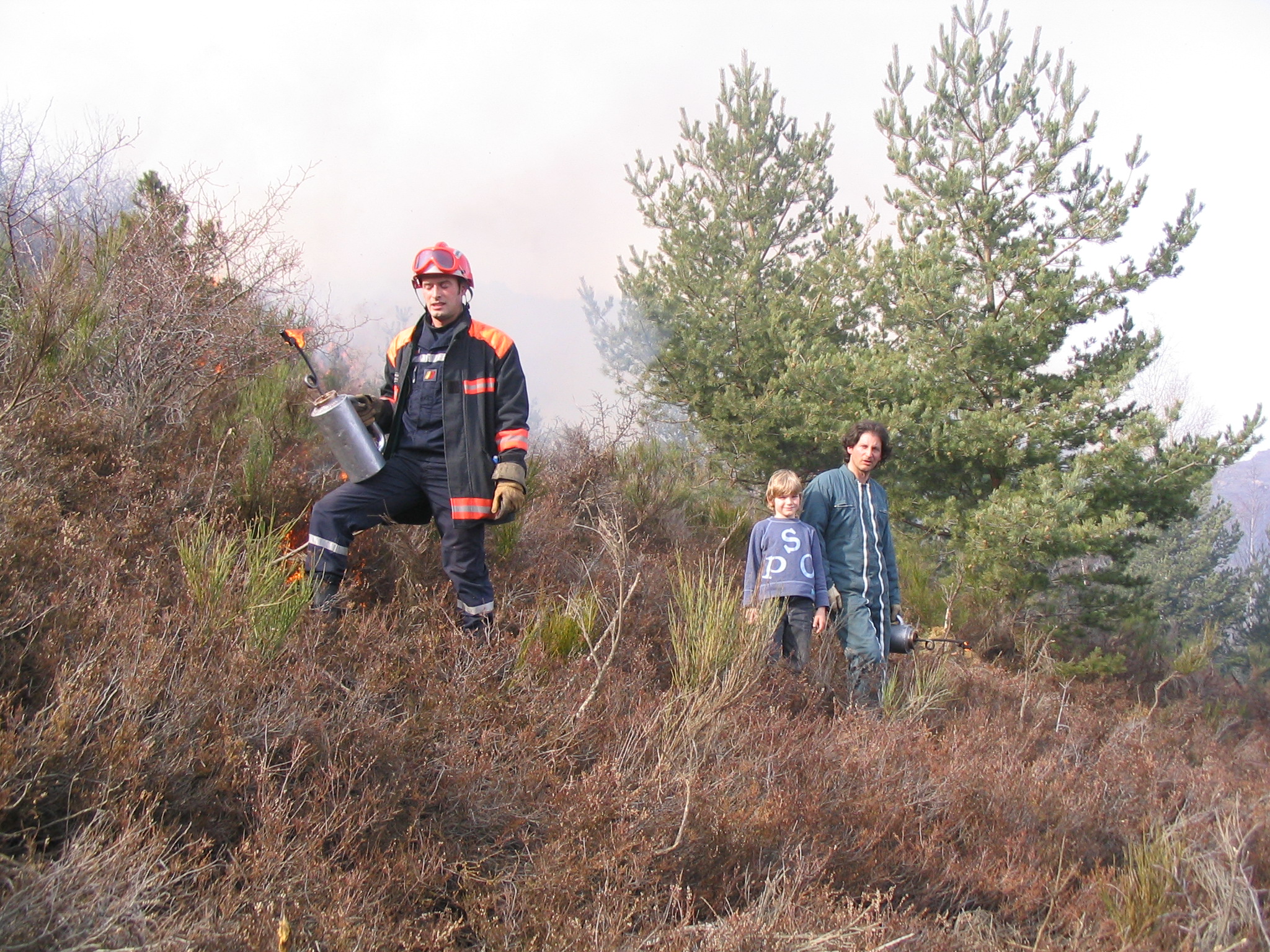
VIRTUAL EXHIBITION
CRADLE

Title: Prescribed burning on Enveitg; Year: 2001; Place: Pla de l’Orri, Enveitg, France; Author & Copyright: Jean-Paul Métailié.
Enveigt is situated in France at the heart of the Eastern Pyrenees. This territory offers vast uplands where strong environmental and heritage traditions come together and are perpetuated by ancient pastoral and agricultural practices, as well as other social uses such as hunting and green tourism. Pastoralism survives today against the backdrop of a difficult global context of rural depopulation, fallow land, rewilding and climate change.
The story of this area is deeply connected to pastoralism and agriculture, which have developed since the Neolithic and flourished through time under the influence of oro-Mediterranean climate.

Title: Location of Enveitg; Year: 2023; Place: Enveitg, France; Author & Copyright: IRIS project

Title: A cow on the Enveitg mountain pasture; Year: 2015; Place: Enveitg, France; Author & Copyright: Jean-Paul Métailié
Unfortunately, current practices of extensive countryside management have led to increasing abandonment of land, resulting in the inevitable and uncontrollable overgrowth of woody vegetation and the loss of high-quality grassland and its related biodiversity. But there is a way of keeping these highlands in good shape, passed on through the generations just as it has been in other European mountain communities, shaping valuable pastoral landscapes through time.
It’s the technique of controlled burning, which creates life through fire.
FIRE

Title: Prescribed burning with natural firebreak (snow); Year: 1994; Place: Enveitg, France; Author & Copyright: Bernard Lambert
To an inexperienced observer, burning in order to preserve might sound contradictory. But controlled burning is in fact a tradition of maintenance and regeneration, notably of high-altitude pastures.
Carried out generally during the winter, controlled burning targets those plant species that the livestock don’t consume during the summer and which end up progressively invading the pastures, taking up pastoral resources necessary for the herds and making the landscape less species rich.

Title: Herd on the Enveitg mountain pasture; Year: 1984; Place: Enveitg, France; Author & Copyright: Christine Rendu et Pierre Campmajo.
In Enveitg as elsewhere in the Pyrenees, this technique was transmitted from father to son and practiced at any time of year, generally on very small open areas and selectively. Since the 1970s, as elsewhere in this region, there has been a generation gap of 30 years where much of the practice was lost until it was re-introduced.
In the 90s, this was one the first sites in the department of Pyrenees-Orientales designated for the experimental reopening of pastures through controlled burning: the first time these memories were rediscovered from the past. Today it is a widely used tool for maintaining pastoral areas and conserving high-quality grasslands.
CONTROL

Title: Callune heath Prescribed burning; Year: 2022; Place: Sournia, France; Author & Copyright: Jean-Paul Méta
Nowadays, prescribed burning is regaining its role in landscape management and plays a crucial role in biocultural heritage conservation. Its traditional use is constantly being adapted to meet the new and ever-changing social demands on the management of these environments, and it is now mainly implemented by fire professionals at the request of livestock farmers.
In the current context of climate change and the increasing frequency and severity of wildfires, this practice is always framed and organised by fire professionals, while it includes training for the local people who are involved in maintaining these traditions safely and adapting them for the future.
In Enveitg, the controlled burnings of the last 30 years have mainly taken place at mid altitude (1600-2200 MSL), where rewilding was particularly significant between the 1970s and 1990s. At the same time, the recovery of this practice has also allowed the discovery of unknown and unsuspected archaeological sites obscured by vegetation such as broom.

Title: Prescribed burnings in Enveitg (from 2011 to 2022); Year: 2023; Place: Toulouse, France; Author & Copyright: Marion Morel, CNRS, laboratoire GEODE (IGN, Bing Satellite, Cellule Brûlage Dirigé 66, Christine Rendu et al. (1996), Marie-Claude Bal (2006), Marie-Claude Bal et al. (2010)).
PROSPECT

Title: Prescribed burning; Year: 2005; Place: Enveitg, France; Author & Copyright: Bernard Lambert.
In a world increasingly affected by climate change, no territory is remote enough to be spared. This is true for Enveitg as well.
Controlled burning practices are an essential tool to preserve a valuable ecosystem, particularly when areas are hard to reach.
Beyond creating healthy and flourishing pastures, natural fire breaks are encouraged, which play a crucial role in wildfire containment.
However, more and more aspects need to be considered carefully (i.e. pastoralism, landscape, living practices, climate, air pollution, biodiversity) and therefore require additional human and financial resources to help research sites before the fires are set and during the burning process itself.

Title: Frequently burned Enveitg area; Year: 2015; Place: Enveitg, France; Author & Copyright: Jean-Paul Métailié

Title: Burning of broom-fern moorland by a farmer training with his son; Year: 2007; Place: Baillestavy, France; Author & Copyright: Bernard Lambert
This practice, with its immeasurable cultural, environmental and economic value must not be lost if sensitive land management is to be assured in such a delicate social and natural environment: it constitutes a key living rural heritage in this area and a significant example of balance between humans and the natural world which must be retained for the good of all.
